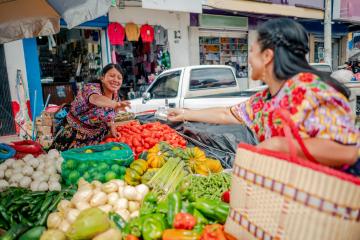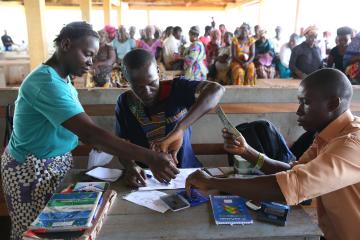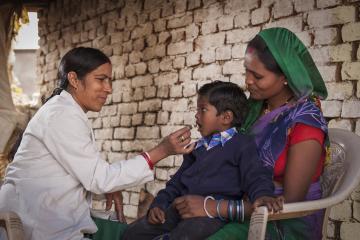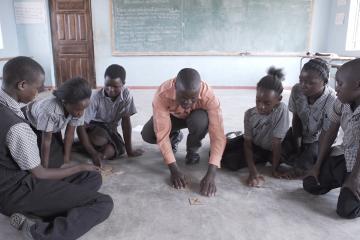Today, hard-won progress is at risk.
In past decades, the world has made important gains in reducing poverty and creating opportunities for people and families to thrive. Behind these gains lies a strong foundation of economic growth, political will, smart investments, innovation, and a growing commitment to use data and evidence to inform policy. But existential challenges remain.
700 million people still live in extreme poverty. 42 million people in the United States live below the poverty line. Clean water, basic health care, and stable employment remain out of reach for many. Budgets are tight and foreign assistance is being cut, raising urgent questions about the future.
With fewer resources, the stakes are higher—but so is the potential for impact if we focus on solutions that are both effective and cost-effective. Data and evidence can help prioritize programs that truly make a difference.
This Evidence Effect page and accompanying blog series share what we have learned about improving the lives and livelihoods of people who are experiencing poverty. We discuss how these lessons have changed thinking, investments, and people's lives. This page offers powerful examples of effective development programs that reflect these lessons.
As we enter a new era marked by tighter budgets, growing inequality, and intensifying scrutiny, our hope is that these ideas contribute to debates and decisions on the future of development spending.

How LMIC governments drive and scale effective policies

Most low- and middle-income governments invest far more in their own social programs than all foreign aid combined. While foreign assistance has been in the spotlight this year, LMIC governments have the mandate and reach to make change stick. Our partners have shown that the path to sustainable development and poverty alleviation should run through innovative and effective governments—and now more than ever, we should be learning from their efforts.
Evidence in action
The Evidence Effect highlights examples of life-changing programs that warrant more attention, investment, and consideration for scaling. Explore them below, drawn from more than 1,200 completed randomized evaluations led by researchers in our network.

The objectives of aid are often unclear.... Reaffirming the most basic principle would provide clarity: The goal should be to invest in projects that will have the largest impact on the quality of life of poor people around the world.
—Abhijit Banerjee and Esther Duflo, The Financial Times, March 2025
Read more about The Evidence Effect
Discover more perspectives from the J-PAL network
Radical simplification: A practical way to get more out of limited foreign assistance budgets
Center for Global Development
The Future of U.S. Foreign Aid: A series of virtual conversations
Harvard Center for International Development
Photos:
(1) Two farmers uproot rice seedlings for transplantation during monsoon season in India. Credit: Shutterstock.com
(2) A woman laughs as an enumerator measures her height in her home in Borong, East Nusa Tenggara, Indonesia. The measurement was part of an impact evaluation of an information campaign focused on preventing malnutrition. Credit: Miranda Putri, J-PAL
(3) Residents purchase rice at subsidized prices at a community hall in Jakarta, Indonesia. Credit: Wulandari Wulandari












